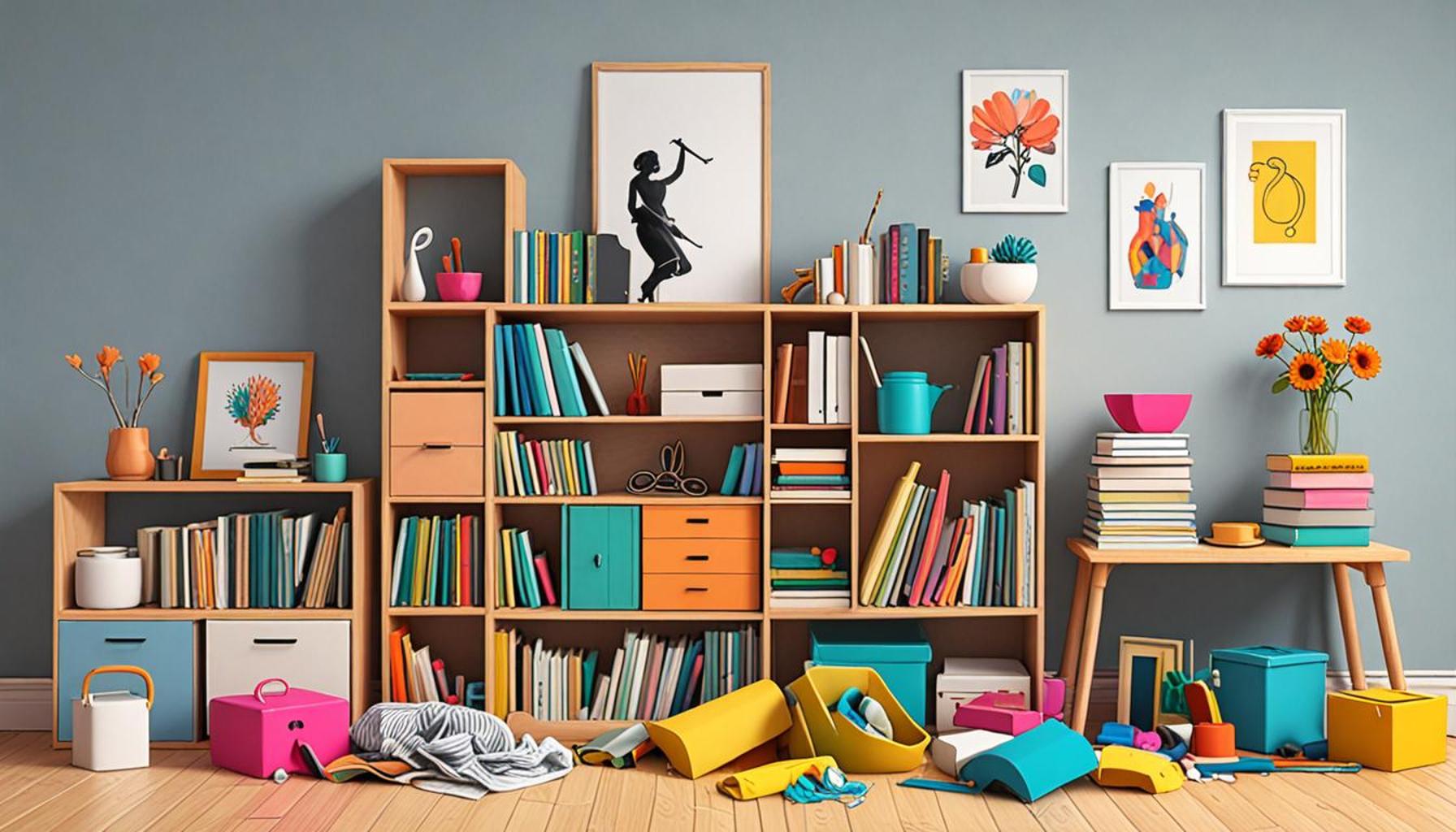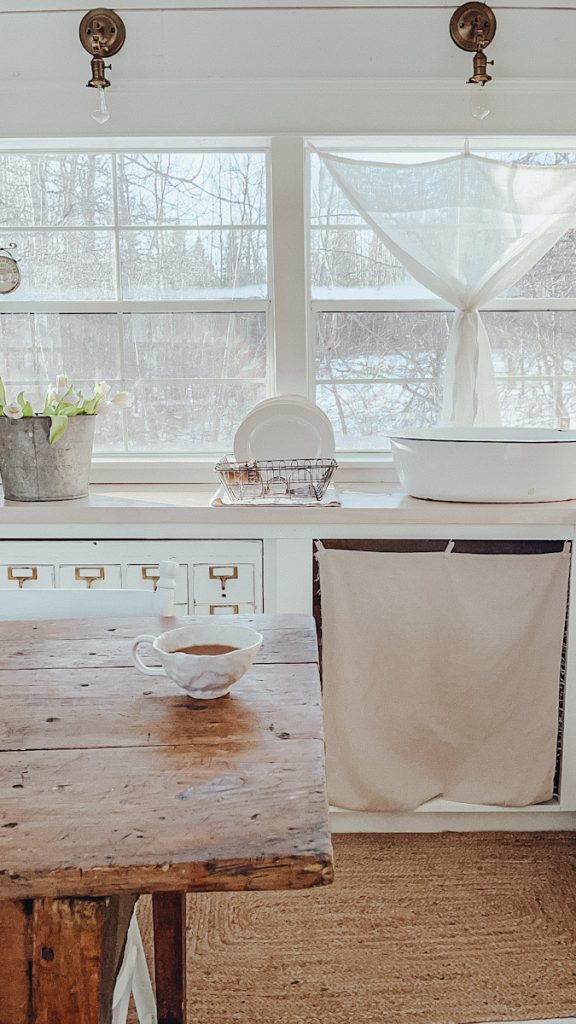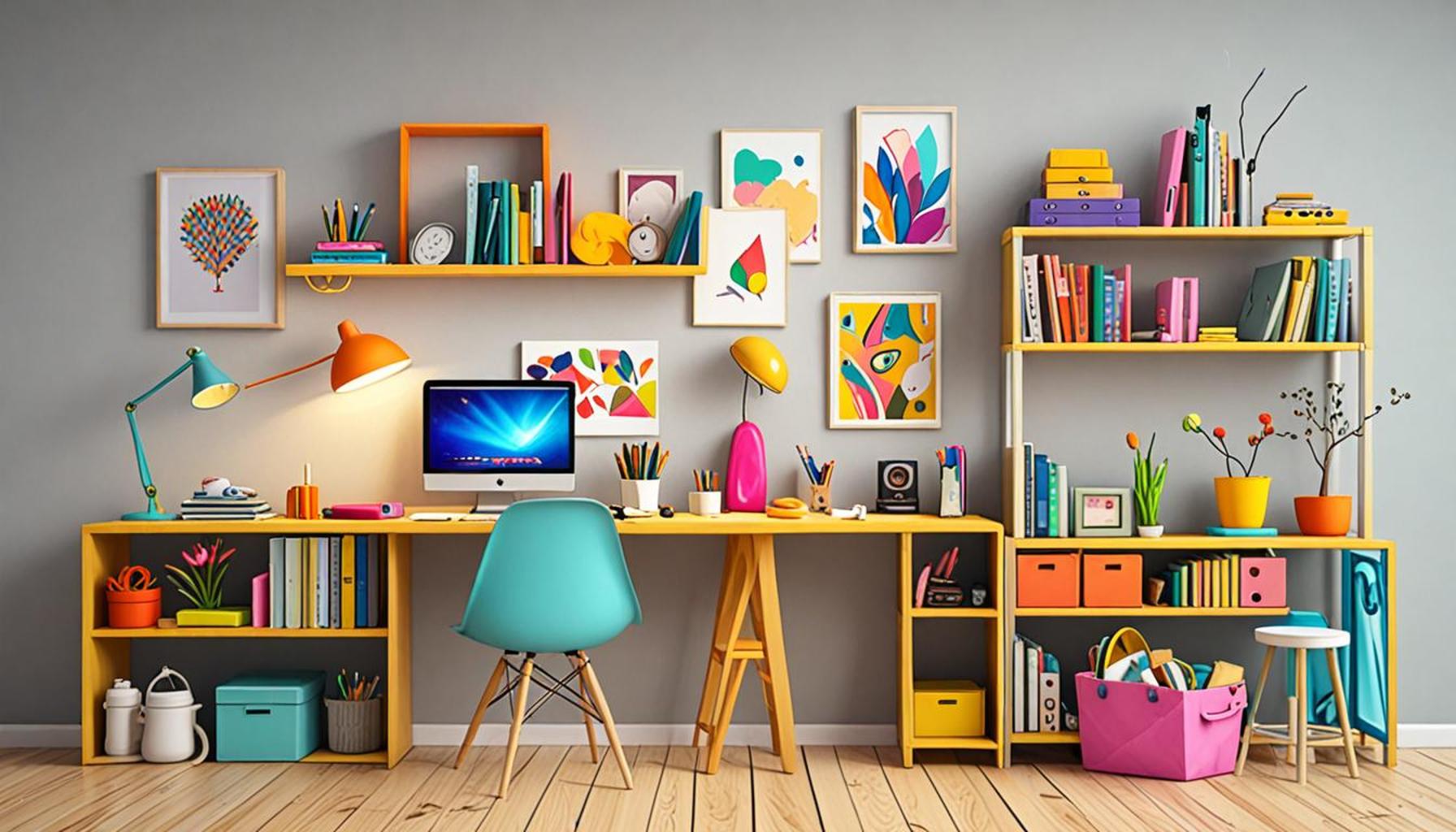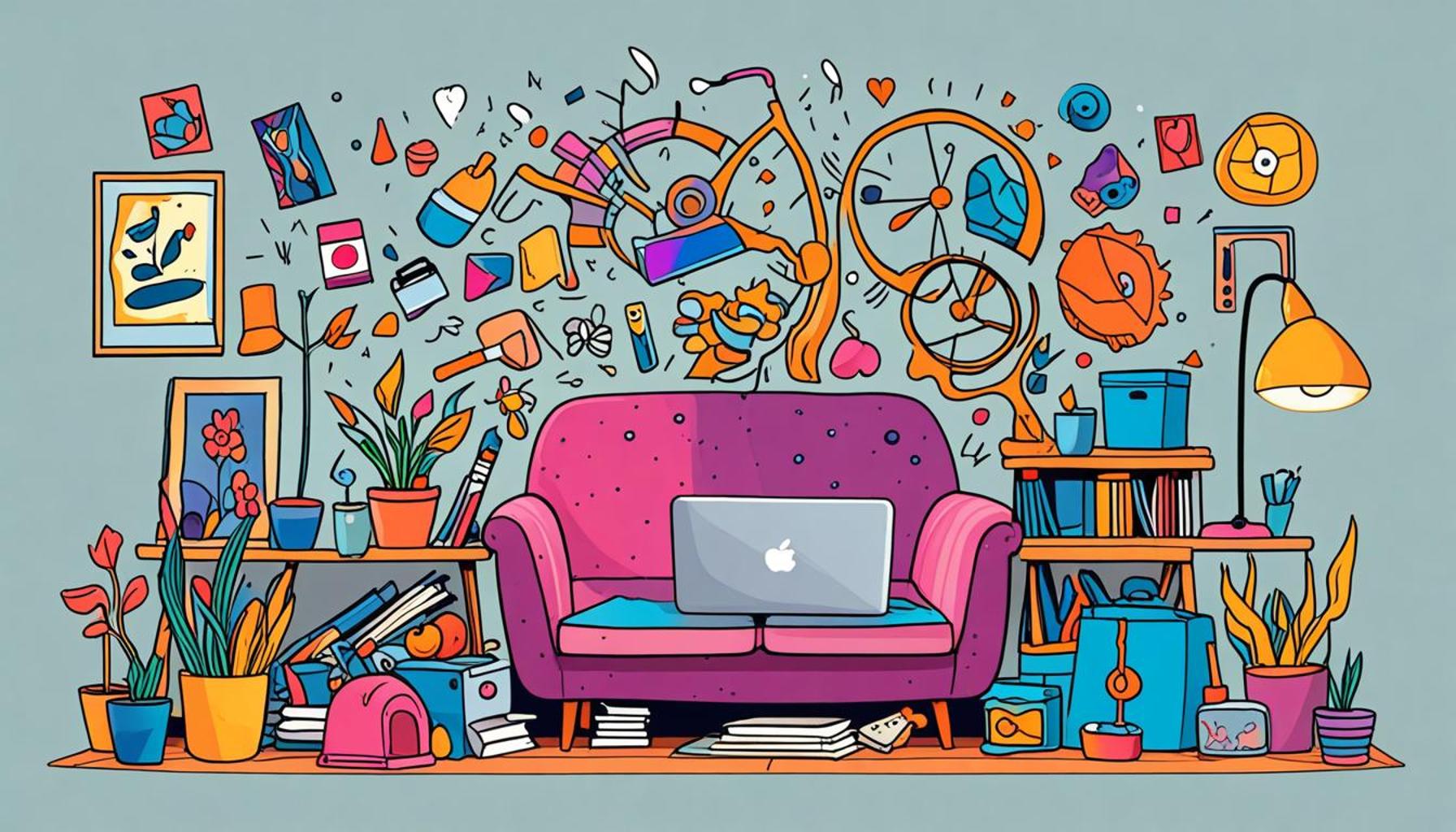The 5-Step Decluttering Method: Simplifying Your Space and Mind

The Impact of a Decluttered Space on Your Mindset
In a world where digital distractions and constant demands are everyday realities, many individuals find themselves surrounded by physical clutter that mirrors their chaotic lives. The relationship between our environment and mental clarity is profound; a cluttered space can lead to a cluttered mind, adversely affecting both productivity and overall mental well-being. The good news is that employing a decluttering method can facilitate a transformative process, not only restoring order to your physical surroundings but also enhancing your cognitive function.
Why Decluttering Matters
Understanding the significance of decluttering goes beyond surface-level organization; it paves the way for a more mindful and intentional lifestyle. A few compelling reasons to consider incorporating decluttering into your life include:
- Reduced Stress: Numerous studies have shown that clutter can elevate cortisol levels, a prime stress hormone. By creating a tidy space, you foster a sense of peace and serenity, significantly lowering anxiety levels. Imagine returning to a home that feels like a sanctuary rather than a source of stress.
- Increased Focus: In a world where multitasking is often glorified, the reality is that our brains can only concentrate on one task at a time. A decluttered environment minimizes distractions, thereby enhancing your ability to focus on the task at hand. For example, a clean desk leads to better work performance as you are less likely to be sidetracked by the many “to-do” items lurking around you.
- Improved Mood: A clean and organized environment can do wonders for your mental health. Research indicates that people often feel more motivated and uplifted in tidy spaces. Furthermore, decluttering can serve as a therapeutic and meditative practice, providing a sense of accomplishment that can elevate your spirits.
What You Will Learn
This article presents an insightful 5-step decluttering method that will lead you through the essential process of transforming both your physical and mental environments. Here’s what you will gain:
- You will learn how to assess what items you truly need versus what you can let go of, promoting more conscious purchasing habits.
- Strategies will be shared for tackling different areas of your home, from cluttered closets to overflowing kitchens, ensuring that no corner is left untouched.
- Finally, you’ll receive practical tips for maintaining your newly decluttered space, empowering you to keep your environment organized well into the future.
Ready to embark on this journey? Discover how the decluttering method can lead to profound changes in your life. By simplifying both your space and mind, you prepare the ground for a more fulfilling and productive existence. Let’s dive into the actionable steps that will guide you through this transformative process.
DISCOVER MORE: Click here to delve into emotional decluttering techniques

Step 1: Evaluate Your Space
The journey towards a more organized and serene living environment starts with a comprehensive evaluation of your space. This initial step in the 5-Step Decluttering Method demands not just a quick glance but a detailed inspection of every room, closet, and nook in your home or workspace. The objective is to discern which items are genuinely useful or meaningful, and which have quietly nestled into your life, contributing to clutter rather than calm.
To kick off the evaluation process, it’s essential to arm yourself with the right supplies: boxes or bags for sorting, a marker for labeling, and a notepad to jot down any thoughts or decisions. Label each box clearly as “Keep,” “Donate,” “Sell,” or “Trash.” This organizational strategy will facilitate a more streamlined and efficient sorting process, reducing the chances of confusion and ensuring that you stay on track.
As you embark on your evaluation, take a systematic approach by tackling one area at a time. Whether you start with your bedroom closet or the cluttered kitchen counter, take the time to truly examine the items in your possession. Be mindful while assessing each item, and ask yourself pivotal questions: What do I use regularly? and Does this item bring me joy or serve a purpose? This introspection fosters a deeper connection with your belongings, enhancing your decision-making process and empowering you to discard items that no longer resonate with your desired lifestyle.
The Importance of a Clear Plan
Having a clear plan to evaluate your space is vital for an effective decluttering journey. You might find inspiration in methods like the celebrated Marie Kondo method, which emphasizes keeping only those items that lose their value in your life—items that must truly “spark joy.” Conversely, the “Four-Box Method” offers another structured approach by allowing you to categorize items efficiently. Let’s explore this method further:
- Keep: This box should include items that you use regularly or that serve a significant purpose in your life, like your favorite kitchen gadgets or clothing that suits your lifestyle.
- Donate: Place gently used items that are still in good condition into this box. Consider local shelters, charities, or thrift stores where your contribution might benefit others in need.
- Sell: Valuable items no longer serving you, like electronics or collectibles, can be sold at online marketplaces such as eBay or Facebook Marketplace. This not only helps reduce clutter but can also put some extra cash in your pocket.
- Trash: Broken or unusable items that clearly have no further place in your life should go here. Remember to consider environmentally-friendly disposal options when possible, such as recycling programs.
Throughout this process, it’s crucial to remember that decluttering is a personal journey. Everyone’s relationship with their belongings varies, influenced by individual lifestyle and priorities. Accepting this uniqueness allows for a more empowered decision-making process, setting the stage for the level of clarity and peace you strive for in your space.
Upon completing your evaluation and sorting, you will uncover insights into your consumption habits—an enlightening experience that often leads to more intentional purchasing decisions in the future. This newfound awareness not only paves the way for a less cluttered environment but also fosters a profound sense of control over your space and belongings. In the following step, we will explore the critical subject of disposition and how to responsibly handle the items you’ve decided to part with, ensuring your decluttering journey is both effective and environmentally conscious.
| Advantages | Descriptions |
|---|---|
| Enhanced Focus | By eliminating physical clutter, you create a calmer environment, which promotes better concentration and productivity. |
| Emotional Clarity | Reducing clutter can lead to improved mental well-being, allowing you to think more clearly and feel less overwhelmed. |
The 5-Step Decluttering Method is not just a strategy for organizing belongings; it’s a transformative journey that reshapes one’s lifestyle. Each step is meticulously designed to guide individuals toward a more simplified existence, fostering both physical and mental clarity. The initial focus on Enhanced Focus draws attention to how a decluttered space directly impacts productivity. Many individuals unknowingly suffer from distractions caused by their surroundings. By systematically organizing items, one can create the mental bandwidth required for creativity and critical thinking.Additionally, the journey towards Emotional Clarity cannot be overlooked. Clutter often evokes feelings of anxiety and chaos. As belongings are sorted and reduced, individuals frequently find that their mental landscape shifts from a state of turmoil to one of peace. Embracing the 5-Step Decluttering Method isn’t merely about cleaning; it’s about achieving a harmonious balance between the external environment and internal feelings. As you delve deeper into this method, you will discover how each step connects to broader themes of mindfulness and sustainability, leading to a truly enriched lifestyle.
DISCOVER MORE: Click here to learn about how lighting influences space perception
Step 2: Disposition – Responsible Handling of Your Belongings
Once you’ve evaluated your space and sorted through your belongings, the next essential step in the 5-Step Decluttering Method is disposition. This phase goes beyond merely deciding what stays and what goes; it involves responsibly handling the items you’ve chosen to part with. The goal is to ensure that your decluttering doesn’t merely shift the problem elsewhere, but instead contributes positively to your environment and community.
One of the key aspects of responsible disposition is understanding the concept of sustainability. With the increasing awareness of environmental issues, it’s crucial to consider how you dispose of items, particularly with regard to electronics and textiles. For instance, did you know that many electronics contain hazardous materials? Instead of tossing out old devices, look for e-waste recycling programs in your area. Communities in the United States, such as San Francisco and New York City, offer designated recycling events that responsibly handle electronic waste while extracting valuable materials.
Donation Options
When it comes to donating items, the options are abundant. Many local charities, thrift stores, and nonprofits are eager to accept gently used clothing, household items, and more. Organizations like Goodwill and The Salvation Army operate across the United States, providing job training and employment opportunities while supporting individuals in need. They typically offer free pickup services for larger donations, making the process even more convenient.
Furthermore, consider donating to local shelters, food banks, and community centers that directly serve those in your area. Less conventional routes, such as Freecycle networks or Buy Nothing groups, connect you with community members who may seek the items you no longer need. Platforms like Facebook Marketplace or Craigslist also provide avenues to sell items, creating opportunities for others while earning extra cash.
Responsible Disposal Practices
For items that cannot be donated or sold, responsible disposal methods can range from recycling to safe disposal. Many cities have specific guidelines on disposing of hazardous items like paint, batteries, and chemicals at designated facilities. Participate in local hazardous waste collection days, which allow residents to safely dispose of these materials, keeping your community environmentally friendly.
Moreover, textiles can be surprisingly challenging to dispose of appropriately. Many organizations recycle textile waste into insulation, padding, or even new garments. Before tossing unwanted clothing into the trash, look for textile recycling bins in your community, or organizations such as Planet Aid that accept clothing donations for recycling and reuse.
The Emotional Connection with Disposition
Recognizing that the process of letting go can evoke emotional responses is essential. Many individuals grapple with the sentimental value attached to items. If you find it challenging to part with certain belongings, it can be helpful to document them with photographs or create a memory book. This practice provides a way to hold onto the memories without the physical clutter weighing you down.
As you embark on this phase of your decluttering journey, remember that disposition isn’t merely about eliminating excess. It’s about fostering responsible consumerism and contributing meaningfully to your community while respecting the environment. The thoughtful handling of your belongings sets the stage for the final steps of the 5-Step Decluttering Method, where we continue to build upon this foundation to cultivate a simplified and serene space.
DISCOVER MORE: Click here to learn how to optimize your space
Conclusion: Embrace the Clarity of a Decluttered Life
In a world where excess often reigns, the 5-Step Decluttering Method serves as a refreshing guide to not only simplify your physical space but also enhance your mental well-being. As we’ve explored, the journey begins with a thorough evaluation, allowing you to recognize what truly serves you. The transition to responsible handling of your belongings shapes a mindful relationship with consumerism while fostering sustainability.
Each phase, from evaluating and sorting to responsibly disposing of and donating items, aims to empower you to make conscious choices. Through a thoughtful approach, you can transform your cluttered environment into a sanctuary that reflects your values and priorities. Moreover, the emotional connections we create with our possessions can be honored through creative avenues, ensuring that memories remain intact without the burden of physical clutter.
As you adopt this method, consider that decluttering is not a one-time event but an ongoing practice of mindfulness. By continuously assessing your belongings and their impact on your life, you can cultivate a space that remains aligned with your evolving self. Strive to embrace this simplicity, and let the 5-Step Decluttering Method lead you toward a clearer mind and more serene existence.
Ultimately, decluttering invites you to reclaim not just your space but also your life. So, take the first step today—start simplifying, and discover the joy of a decluttered mind and a harmonious home.


